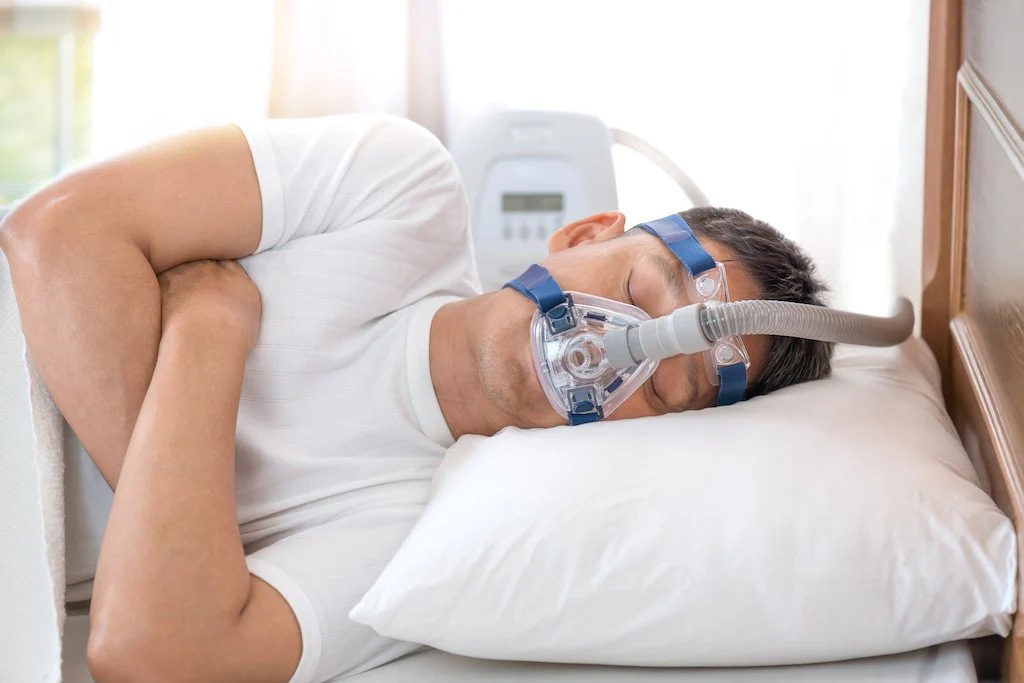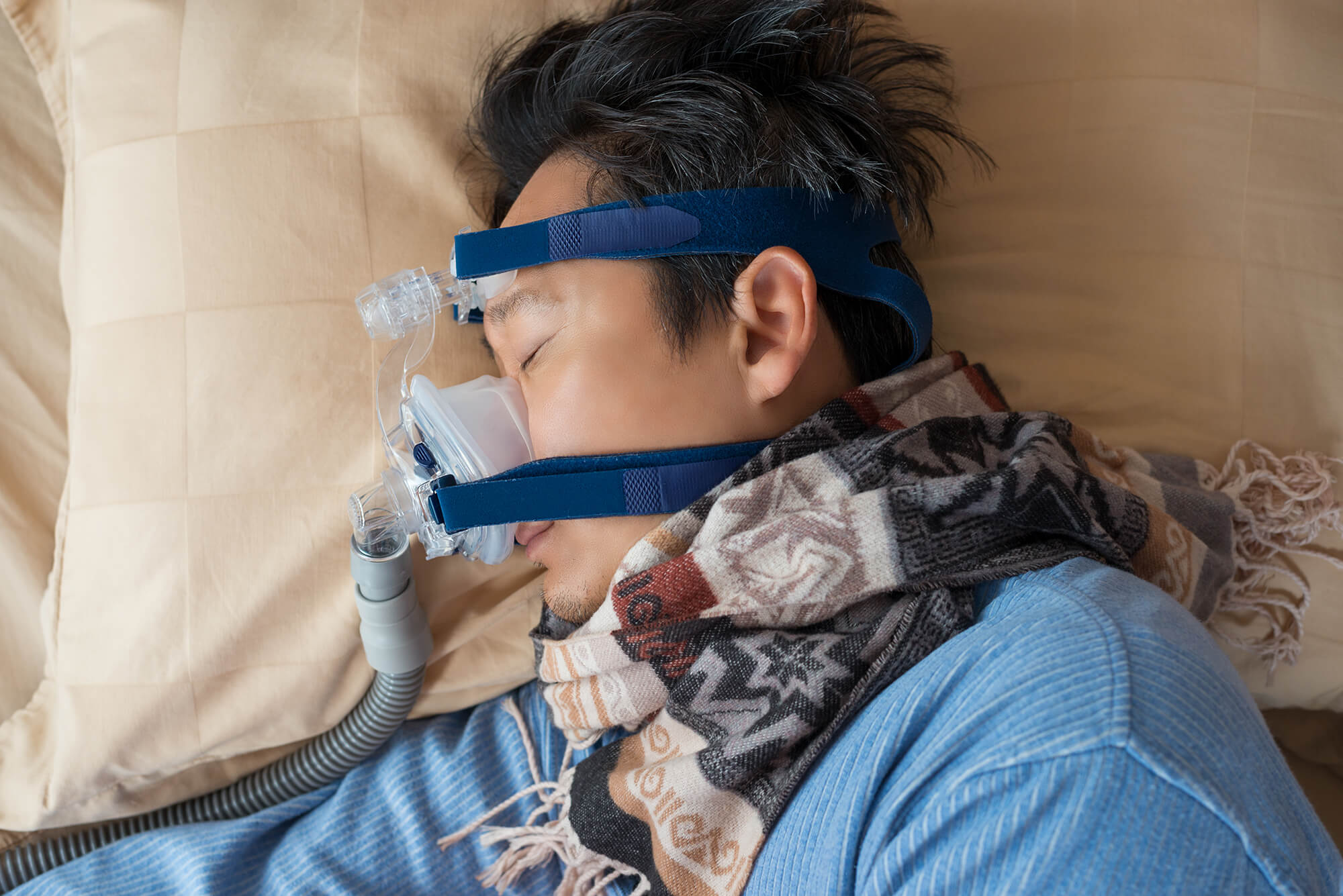You may have short breathing pauses while you sleep if you have a condition called sleep apnea. People with sleep apnea don’t breathe in enough oxygen. They frequently gasp and awaken as a consequence.
Many times, people don’t realize they’ve stopped breathing because they believe their sleep cycle to be normal. Sleep apnea and snoring may sound identical.
Sleep apnea may cause a number of health problems in addition to making you more weary in the morning. If left untreated, this sleep disturbance may result in memory loss, compromised immune system performance, issues with mental health, and an elevated risk of heart failure.
Surgery, medicine, and breathing devices are common forms of sleep apnea treatment. However, certain food changes and housekeeping help may also improve your quality of life and sleep.
Visit our sleep shop to see all snoring and sleep apnea products that Healthline has approved.
Changes in lifestyle for sleep apnea
Utilizing a CPAP mask at night is one of the traditional sleep apnea treatments. Even if it’s effective, some people find this method uncomfortable. The same benefits could be offered by certain natural treatments. Here are six alternative ways to lessen sleep apnea’s negative impacts.
Maintain your excellent health.
Patients with sleep apnea are often advised by doctors to lose weight. Obesity may increase the likelihood of nasal passages and airways being obstructed, particularly in the upper body. These challenges might result in your breathing stopping suddenly or for a long time while you’re sleeping.
By keeping a healthy weight, your airways may stay open and your sleep apnea symptoms may be decreased. According to research, modest weight reduction in obese people may be able to avoid the need for extended CPAP therapy or upper airway surgery.
Sleep apnea may sometimes be cured by decreasing weight. However, if you acquire weight once again, the problem can resurface.

Try yoga.
Regular exercise can improve your sleep apnea, strengthen your heart, and increase your energy levels. Yoga may help to improve your breathing muscles and encourage the passage of oxygen.
With sleep apnea, your blood’s oxygen saturation drops. Your oxygen levels are raised by the various breathing methods used in yoga. Yoga thereby reduces the potential for sleep disruptions.
Change the way you sleep.
Even though it only requires a little modification, altering your sleeping position may assist with the symptoms of sleep apnea and improve the quality of your sleep. A 2006 study found that more than half of those with obstructive sleep apnea are impacted by their posture.
Studies show that laying on your back in the supine posture, often known as “sleeping on your back,” might aggravate symptoms. Adults who lie on their sides while sleeping could see a return to normal breathing.
However, a 2002 study found that children with sleep apnea perform better while lying on their backs.
Discuss body alignment and your sleep apnea symptoms with your doctor to identify your treatment options.
Put a humidifier to use.
Humidifiers are tools that add moisture to the air. Dry air may affect the body and the respiratory system. You may be able to breathe easier, get rid of congestion, and open up your airways by using a humidifier.
For added benefits, think about adding lavender, peppermint, or eucalyptus oil to a humidifier. The sedative and anti-inflammatory qualities of these three essential oils are widely known.
in accordance with the manufacturer’s cleaning instructions, to clean your humidifier. There might be bacterial and mould growth.

Avoid drinking and smoking.
Adapting your lifestyle may improve your health and encourage sound sleep. Consider quitting smoking and drinking less alcohol to decrease the effects of sleep apnea.
Your throat’s breathing muscles are loosened by alcohol. Snoring and disruptions to the sleep cycle may result from this. Additionally, it could irritate the airways in your body, obstructing breathing.
Similar to consuming alcohol, smoking may make oedema and inflammation of the airways worse. Your snoring and sleep apnea may become worse as a result.
A 2012 research identified smoking as a risk factor for developing sleep apnea. Since persons who suffer sleep apnea may also be inclined to smoking, the study suggests that addressing the problem may help people stop smoking.
Utilize oral devices
By moving your jaw or tongue, oral appliances may help with sleep apnea by keeping your airway open while you are dozing.
The two basic types are tongue stabilizing devices and mandibular advancement devices. They work by moving your lower jaw or tongue forward to minimize the obstruction at the back of your throat.
These gadgets range from cost-effective over-the-counter (OTC) substitutes to ones that a dentist would customize for you.
The Australian Academy of Dental Sleep Medicine advises oral appliances as a beneficial sleep apnea therapy.
According to a 2015 recommendation, oral appliances should be used by those with sleep apnea who cannot tolerate CPAP machines. This suggestion prefers custom-fit over over-the-counter appliances since the former allow for accurate jaw alignment, which will enhance your sleep.

What is the outlook?
With a few natural remedies and lifestyle changes, sleep apnea symptoms may be alleviated. However, traditional medical methods should not be ignored. One of the crucial therapies for this ailment includes prescription medication, even surgery.
Talk to your doctor about your options before deciding on an alternative course of treatment. Visit a doctor as soon as your symptoms start to become worse.
Treatment and diagnosis
A thorough sleep history and a physical examination that covers the circulatory, respiratory, and neurological systems should be part of the clinical evaluation. After the assessment, a sleep lab will do polysomnography, a diagnostic practice for OSA.
It may show regular apneas during sleep that signify the brain’s inhibition of controlling the patency of the airways. Evidence points to a natural reduction of pharyngeal dilator muscle tone that occurs during sleep as well as an aberrant pharyngeal airway that causes inspiratory collapse.
A minimum of 10 seconds should pass between an apnea and a hypopnea, with a hypopnea being defined as an oxygen desaturation of at least 3% or a waking from sleep. OSA is categorized by an AHI depending on its severity.
An important diagnostic criteria for OSA is a value of 15 or more occurrences per hour, or five or more events per hour with symptoms present or concurrent cardiovascular diseases. In order to treat OSA, patients often use behavioral changes, CPAP therapy, mouth appliances, mandibular advancement devices, supplement therapies, and, in more severe situations, surgery.
Conventional Treatment
Devices for Positive Airway Pressure
PAP machines are used to lower AHI readings and are regarded as the main tools for managing OSA. Treatment for moderate-to-severe OSA often involves the use of these devices. PAP devices come with a mask that is worn over the mouth and nose, or sometimes under the nose.
It offers compressed air that circulates often or is stopped while you sleep. An increase in air pressure prevents airway collapsing and allows for uninterrupted breathing while you sleep.
CPAP, auto-titrating PAP (APAP), and bilevel positive airway pressure are examples of PAP device types. The CPAP is the most widely used of all. The airway pressure must be consistent throughout both inhalations and exhalations for CPAP devices to work properly.
Mandibular Advancement Device (MAD)
The mandibular advancement device (MAD) has established itself as a crucial tool in the management of OSA and snoring. It has been thought to help with mild to severe sleep apnea and bruxism reduction (nocturnal grinding).
The mandible is protruded forward with MAD appliances, often referred to as mandibular repositioning appliances, altering the position of the tongue and jaw. The MAD stops the upper airway from collapsing in this manner. It has been shown that the design elements have an impact on how well MAD works to cure OSA.
MAD is regarded as an alternative, and it may be used as the first line of treatment for simple snorers, mild OSA patients, mild-moderate OSA patients with low body mass index, and patients with increased resistance of the upper airway syndrome. It may also be used as the second line of treatment for patients who are intolerant to PAP devices, have elevated surgical risk, or have negative surgical outcomes.
Surgery
The anatomical locations of the obstacles are taken into account while creating a surgical treatment plan. Nasal surgery, oropharynx redundant tissue surgery, tongue surgery, craniofacial surgery, tracheostomy placement, and bariatric surgery for weight reduction are among the common operations. When structural anomalies are found and standard therapy methods like CPAP fail to improve the patient’s quality of life due to OSA, surgical therapies are performed when the benefits exceed the risks.
Behavior modifications
Loss of weight
Obesity has been strongly associated with the development of OSA, and weight loss is part of the treatment strategy. Obesity leads to the structural constriction of the airway, and studies have shown that a 10% increase in weight may increase OSA risk by a factor of six. A randomized control trial with a very low-calorie diet and advice on leading an active lifestyle was carried out by Tuomilehto et al.
The intervention group’s participants underwent a three-month intense weight-loss program with an extremely low-calorie diet over the course of 24 months. The control group, on the other hand, got three general sessions on nutrition and exercise counseling. The lifestyle changes helped people lose weight (-10.7 6.5 kg; BMI, -3.5 2.1 [mean SD]), and there was a discernible difference in the average AHI across the study groups. For the majority of patients with mild OSA, the result was favorable with a noticeable weight loss, and it was sustained after one year of follow-up.
Fitness and Diet
It may be simpler for people to manage their body weight without counting calories or limiting daily portion sizes if they choose an optimal diet that includes a neutral diet rich in fruits, vegetables, whole-grain products, and high-quality proteins and excludes refined grains, refined sugars, and highly processed foods.
The two main factors in weight reduction are exercise and energy expenditure. Even while following a nutritious diet, a sedentary lifestyle demands lower calorie intake to sustain weight reduction. In particular, adopting a diet that is suitable with a person’s own food preferences and lifestyle choices is the best way to lose weight over the long run.
Diets that are successful entail sustained, gradual adjustment. An even better objective is to avoid and maintain weight gain by comprehensive education, behavior adjustments, and motivation in order to achieve long-lasting weight reduction and other health advantages.
Effects of different diets: In obese, older persons with OSA, Dobrosielski et al. looked at the effects of diet, exercise, and weight reduction. Participants consumed less calories and engaged in exercise (three days a week). Older people’ OSA severity decreased after an exercise and weight-loss program, supporting the idea that this lifestyle strategy may be a crucial first-line nonsurgical and nonpharmacological therapy for OSA.
Comparing the Mediterranean diet to a low-fat, calorie-restricted diet, the Mediterranean diet seems to be a potential strategy to ameliorate OSA severity. A typical Mediterranean diet includes regular consumption of fish and other seafood, plenty of olive oil as the main source of fat in cooking, a wide variety of fresh fruits and vegetables as the standard dessert, moderate amounts of wine with meals, little or no meat, and moderate amounts of dairy products.
The high antioxidant, micronutrient, and anti-inflammatory content of this diet may help to enhance upper airway neuromuscular control, lower inflammation, and reduce oxidative stress, all of which might lessen OSA severity.
High-protein diets may discourage overindulgence and prevent muscle mass loss; formula diets and intermittent fasting may result in significant weight reduction, but the benefits are only temporary. For intermittent diets, there are insufficient long-term safety and sufficiency evidence, and there is ongoing debate on the ideal pattern and degree of dietary restriction.
Last thoughts
Sleep is essential for maintaining our mental, physical, and emotional well-being, but for some people—especially those who have obstructive sleep apnea—getting enough shut-eye at night may be challenging.
Over the course of the night, you repeatedly temporarily cease breathing due to a sleep disorder called sleep apnea. Due to the lack of oxygen, this might cause you to gasp and wake up at night. Your chances of sleep apnea, atrial fibrillation (AFib), heart failure, stroke, diabetes, and a host of other issues may increase as a result.
According to studies, even only two days a week or seven days a week of exercise, such as walking, yoga, running, biking, and strength training, may help with sleep apnea symptoms.
You should be able to breathe more easily at night thanks to these sleep guidelines, and you’ll feel more rested when you wake up.




